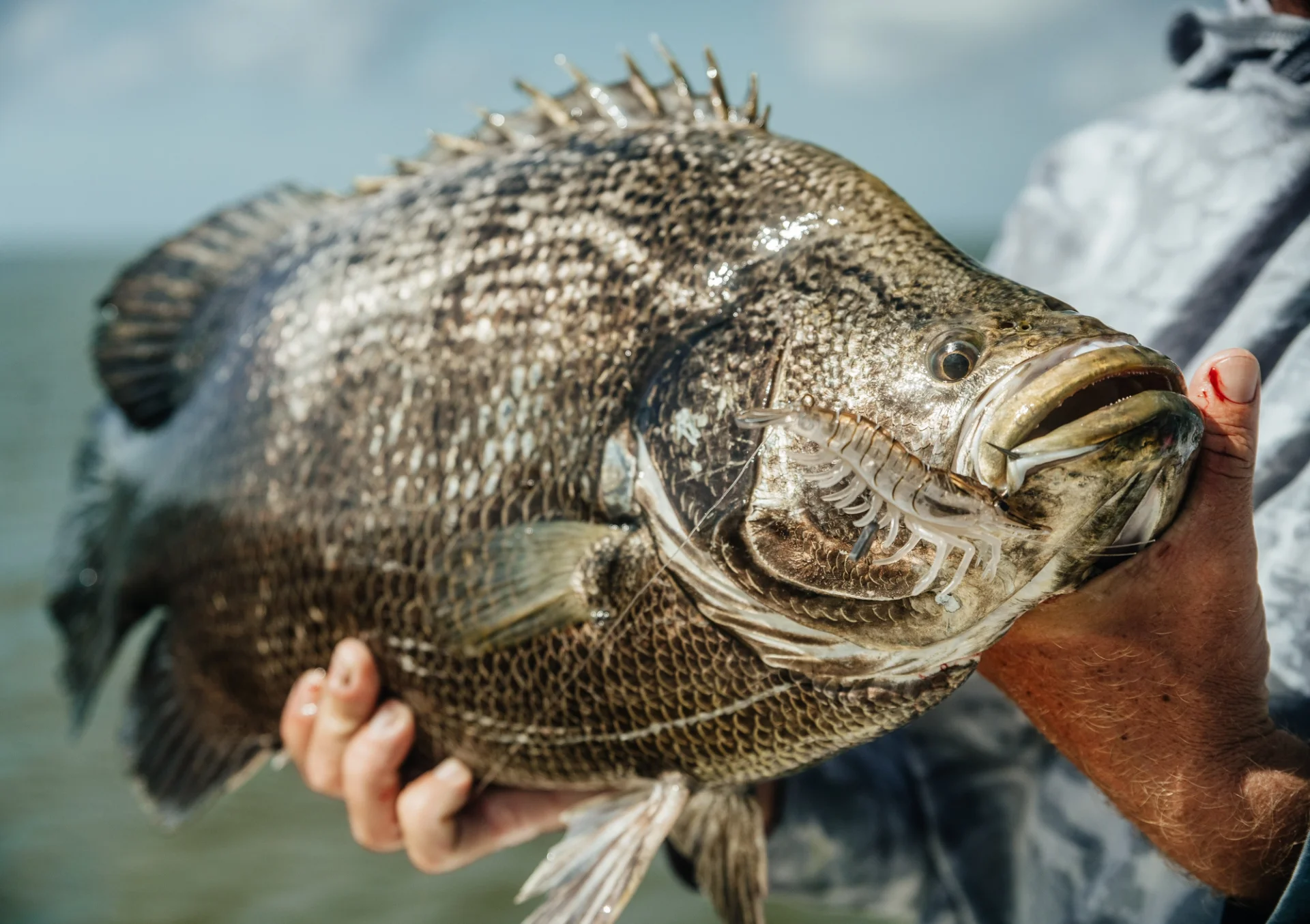Cozy Up To Winter Backwaters

When winter’s blustery chill grips the coastal areas, those vibrant waters where snook, redfish, spotted seatrout, tarpon and others create warm season delights often become wind-streaked wastelands. Throughout the Gulf of Mexico and the lower Atlantic Coast, many shallow water species seek cold season refuge in cozy backwaters. This could be a well-defined creek running to the coast, a rambling bayou, a long residential canal, or a glorified marsh drain; whatever the form, a few attractive principles remain constant.
- Water Temperature: With greater depth than surrounding shallows, you’ll typically find warmer, more stable water. Dredged residential waterways are particularly popular, as they often contain deeper inner sections and dark, warm bottoms.
- Wind Break: Winter cold fronts bring sporty winds that can turn inshore flats and bays into frothy, teeth-rattling no-fun zones. Tuck inside a creek, canal, or bayou and natural land breaks, tree lines and waterfront homes cut the wind and allow anglers to fish at a much more reasonable pace.
- Clarity: Typically lined with vegetation and often heavily silted, coastal creeks and waterways usually have some degree of color. This darker water puts fish at ease, as opposed to the high visibility found on the inshore flats.
Expect Diversity
In massive coastal systems with numerous tributaries and smaller arteries — think: Louisiana’s Mississippi Delta or Jacksonville, Florida’s St. Johns River — you could find not only a concentration of fish, but a fascinating variety.
Salinity levels tend to separate species like seatrout, bluefish, and mackerel from the traditionally sweet water species; however, a dozen casts to a single dock could very likely deliver largemouth bass, redfish, flounder, and channel catfish.
With so many fish packing into tighter confines than they may roam in the warmer months, feeding competition runs high. When fish are rushing to grab every meal, they’re more vulnerable to a well-placed cast.
An Effective Arsenal
Across the board, if a waterway offers docks, fish will relate to the hard structures for their heat retention, sun shading, and ambush feeding opportunities. (Not to mention dolphin avoidance.) Skipping docks with a jig and craw or creature bait trailer does a good job of imitating a fresh or saltwater crustacean. Likewise, working the perimeter with a Mustad Arm Lock Spinnerbait, a LIVETARGET Hollow Body Mullet, or Minnow Jerkbait will tempt the aggressive ones.
Elsewhere, your creek mission will be well served with a LIVETARGET Live Shrimp Finesse Bait, for bottom crawling, a LIVETARGET Scaled Sardine Twitchbait, or LIVETARGET Sardine Swimbait for the mid-depths, or a popping cork rig with a LIVETARGET Rigged Shrimp for surface commotion. Also, with mullet likely to show up just about anywhere in these winter retreats, keeping that Hollow Body on deck is a good idea.
Another good idea — keep a light Mustad Shad Darter jig head with a soft jerkbait or paddle tail handy. From blind casting open water, to leading that school of redfish, to probing an oyster bar drop-off, or intercepting those juvenile tarpon rolling in the middle of a canal, the classic lead head jig is an absolute must.
Know Your Bottom: Bars and shell mounds often present tempting spots to anchor the boat or paddle craft and step out for a stealthy wade fishing mission (insulated waders recommended). No doubt, lowering your profile increases stealth, but make sure you consider your course—going and returning.
For one thing, setting out during low tide means returning through rising water. Daily tide charts provide an accurate picture of what to expect, but also note the high tide lines typically visible on mangrove trees, docks, seawalls, etc., and wisely plan your timing.
Another consideration is bottom composition. Firm, sandy spots and patches of scattered shell, and fully formed oyster bars exist. Still, coastal creeks often present a soft, oatmeal-level mud that can be inconvenient, if not downright dangerous — especially if you’re fishing solo.
Test the bottom before committing — a rod butt, push pole, or stake-out mud anchor does the job. Winter backwaters can offer impressive opportunities, but no fish is worth your safety. If you don’t know, don’t go.
